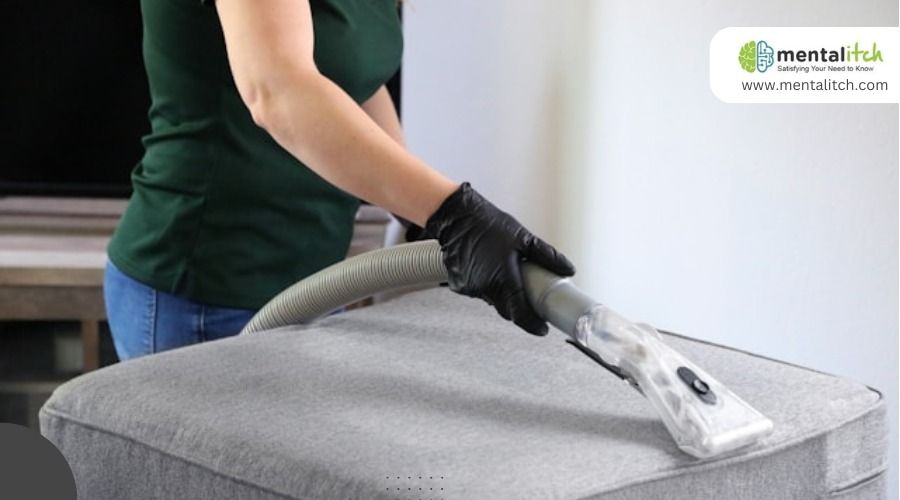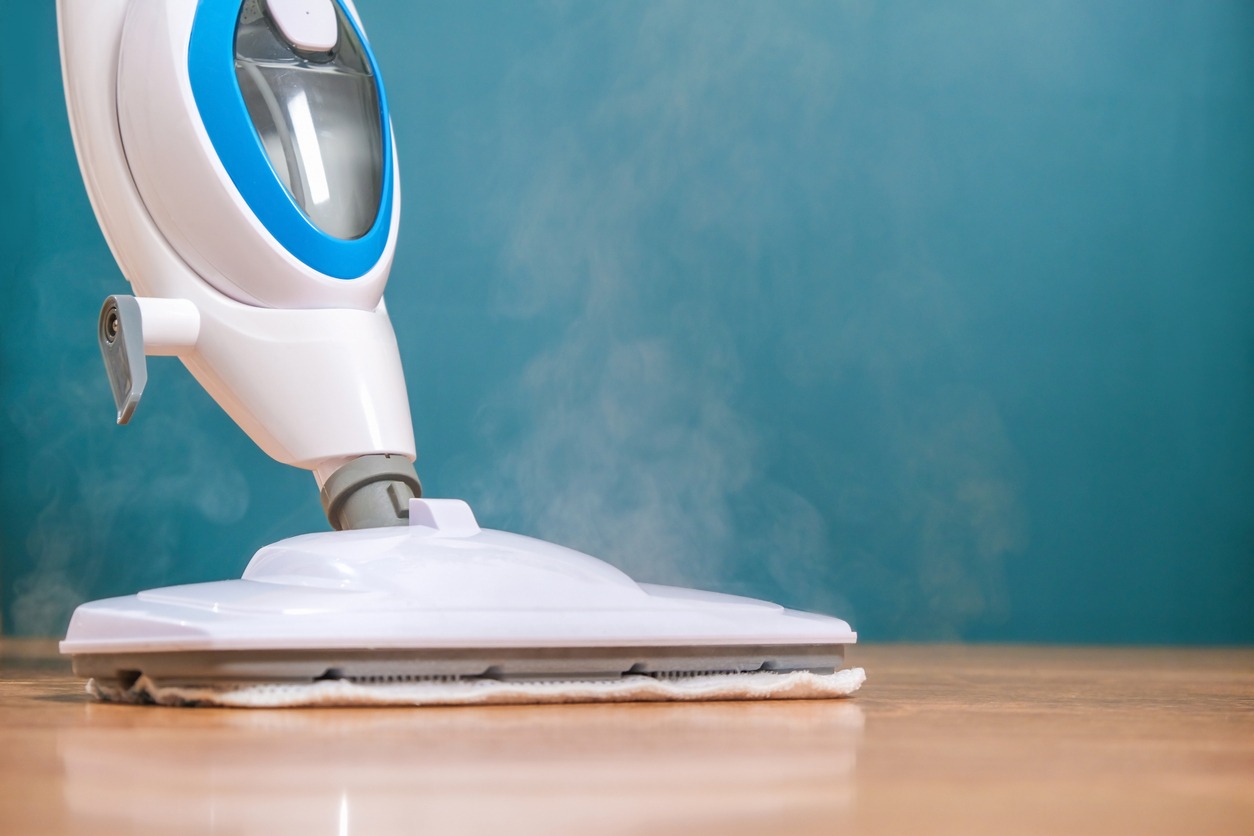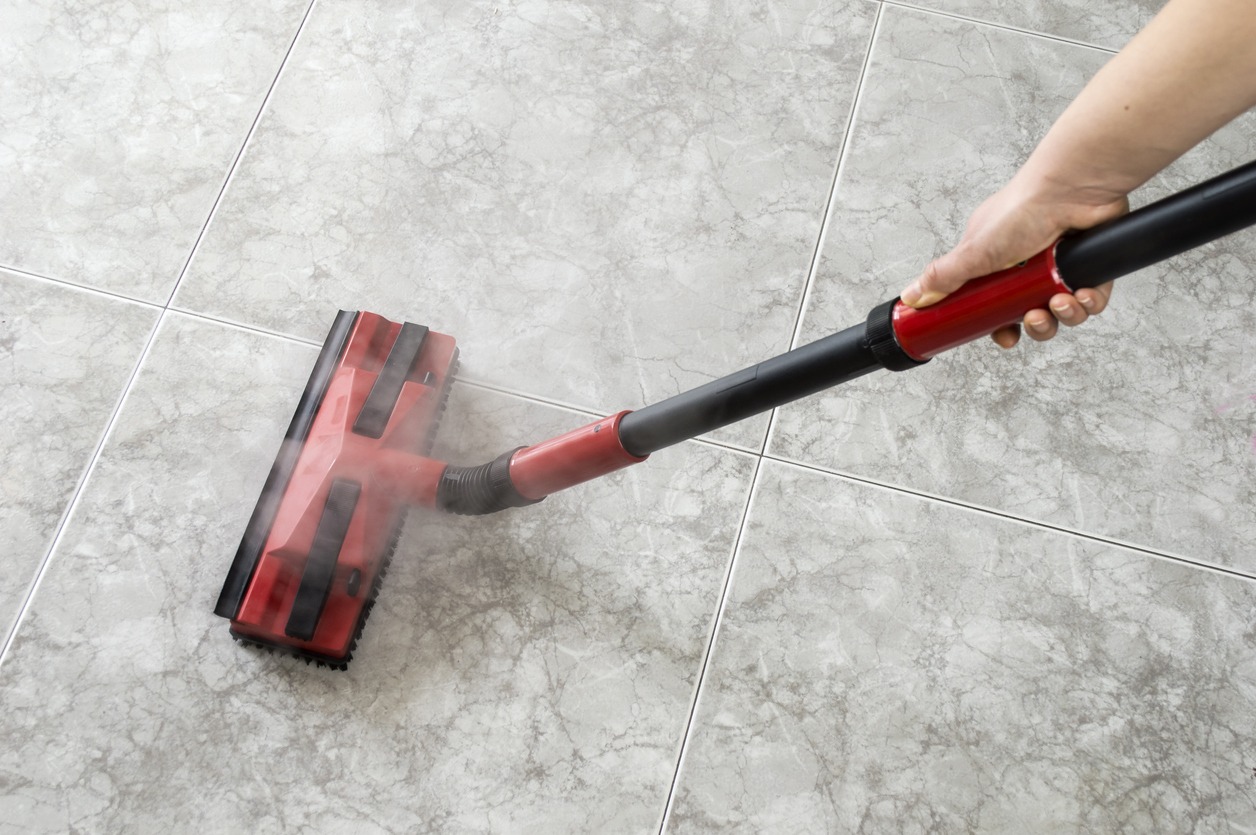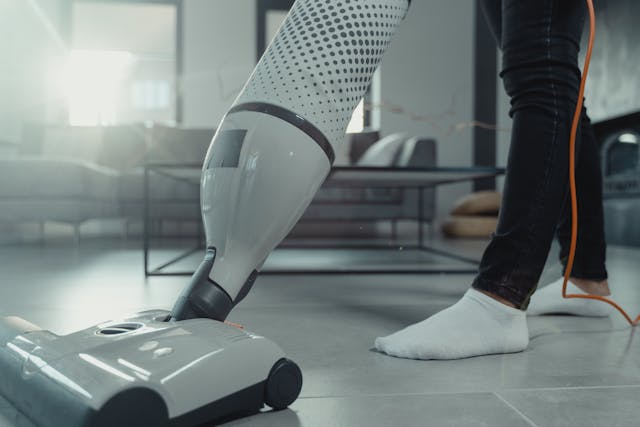You’ve heard of the steam cleaner’s convenience, its effectiveness, and maybe even its history, but have you ever wondered how the first one was made? It all began in an Italian boiler factory in the 1960s, where the need for a dry vapor system sparked the initial concept. However, it wasn’t until the introduction of a hot vapor system by European manufacturers that steam cleaning truly found its footing in both industrial settings and, eventually, our homes.
This journey from a rudimentary device to the sleek, versatile cleaners we rely on today is not just a tale of technological advancement but a testament to human ingenuity and adaptability. Discover the challenges faced, the solutions devised, and how these innovations paved the way for the steam cleaners we now consider essential.
The Genesis of Steam Cleaning
In the midst of the Prohibition era, Frank W. Ofeldt II and Frederick E. Schuchman Sr. teamed up to develop the very first steam cleaner, marking a revolutionary step in cleaning technology. This period in the history of steam cleaning isn’t just about the birth of a machine but the dawn of a new era in how we approach cleanliness and hygiene. The invention wasn’t just a product of its time; it was a beacon for future innovations in the cleaning industry.
The term ‘High Pressure Jenny’ was coined by Mr. Eltinge, adding a unique name to this groundbreaking device. It wasn’t long before Jenny Products, Inc. took another leap by pioneering the first positive displacement triplex pump for steam cleaners in 1934. This innovation was a game-changer, enhancing the machine’s efficiency and effectiveness, especially for grease removal, which was its primary focus during the early days. The mixture of wet steam and chemicals provided a powerful solution to the cleaning challenges of the time.
This history of steam cleaning showcases not just a series of inventions but a journey of continuous improvement and adaptation, setting the stage for the modern cleaning solutions we rely on today.
Early Innovations and Inventors
You’re about to explore how a portable whiskey still sparked the invention of the first steam cleaner by Frank W. Ofeldt II in 1926. You’ll learn about the key inventors, including the collaboration between Ofeldt and Frederick E. Schuchman Sr., that propelled the evolution of steam cleaning technology.
Initial Concept Origins
Discover how Frank W. Ofeldt II’s encounter with a portable whiskey still in 1926 led to the groundbreaking invention of the first steam cleaner, revolutionizing grease removal techniques. Stumbling upon the idea, Ofeldt recognized the potential of using wet steam mixed with chemicals for effective grease removal. This epiphany wasn’t isolated; he collaborated with Frederick E. Schuchman Sr., driving the concept forward. Together, they developed a cleaning contraption harnessing steam’s power, marking the dawn of a new era in cleaning technology.
The introduction of the term ‘High Pressure Jenny’ for these steam cleaners underscored their innovative capabilities. This early innovation laid the groundwork for significant advancements in industrial and commercial cleaning practices, changing the landscape forever.
Key Inventors Identified
Having learned about the initial concept origins, let’s now focus on the key figures behind these early innovations, primarily Frank W. Ofeldt II and Frederick E. Schuchman Sr., whose collaborative efforts birthed the first steam cleaner. This pivotal moment in cleaning history wouldn’t have been possible without their vision and determination.
They envisioned a device that combined wet steam with chemicals to tackle tough grease. This invention laid down the foundational technology for steam cleaners as we know them today.
Integral to their success, the Homestead Valve Company contributed by developing the Hypressure Vapor Spray Generator, enhancing the machine’s efficiency. Furthermore, Jenny Products, Inc. played a crucial role, introducing the first positive displacement triplex pump in 1934, a significant stride forward for steam cleaning technology.
Evolution of Design
As we delve into the evolution of steam cleaner designs, it’s crucial to spotlight the inventors whose early innovations paved the way for the modern devices we rely on today. Frank W. Ofeldt II, in collaboration with Frederick E. Schuchman Sr., developed the first steam cleaner in 1926, a time when Prohibition influenced many technological advancements. Their creation employed steam technology for cleaning, introducing the term ‘High Pressure Jenny’ by Mr. Eltinge to describe steam cleaners. This marked a significant leap in cleaning technology.
Jenny Products, Inc. further advanced steam cleaning with the introduction of positive displacement pumps, optimizing the use of wet steam and chemicals for efficient grease removal. These pioneering efforts set the stage for the sophisticated steam cleaners we use today.
The First Prototype
You might wonder how the inventor’s initial spark of inspiration led to the creation of the first steam cleaner prototype. Overcoming design challenges was no small feat, requiring innovative solutions to make it functional.
Inventor’s Initial Inspiration
In 1926, Frank W. Ofeldt II stumbled upon the idea for the first steam cleaner while attempting to design a portable whiskey still during the Prohibition era. His accidental discovery highlighted the cleaning power of wet steam mixed with chemicals, especially for removing stubborn grease. This eureka moment wasn’t just about cleanliness but marked the dawn of steam cleaning technology across various industries.
- Frank’s original goal was far from cleaning; he wanted to distill whiskey.
- The Prohibition era spurred many to creative problem-solving.
- Wet steam and chemicals proved to be a powerful cleaning duo.
- Collaboration was key; Frederick E. Schuchman Sr. helped bring the idea to life.
- This invention was the humble beginning of the steam cleaning industry.
Design Challenges Overcome
Crafting the first steam cleaner prototype presented a myriad of challenges, particularly in achieving the precise balance of heat and moisture for effective cleaning. In the 1960s, the journey began in an Italian boiler factory, where the idea was to create a device that could clean more efficiently than traditional methods.
The early models lacked a dry vapor system, which led to inefficient cleaning due to too much moisture. It was a significant hurdle that needed addressing. About 30 years ago, European manufacturers revolutionized the design by introducing a hot vapor system, significantly improving performance. This innovation was crucial for the steam cleaner’s adoption in large European factories and hospitals, showcasing the device’s industrial cleaning prowess.
Overcoming these obstacles was essential in crafting a machine that could effectively generate and apply steam for cleaning purposes.
Prototype Testing Phase
After overcoming design challenges, attention shifted to the prototype testing phase, where the focus was on evaluating the steam cleaner’s performance in real-world conditions. The Italian boiler manufacturers who developed the first steam cleaner prototype in the early 1960s were now ready to see their creation in action.
Here are a few key insights from this crucial phase:
- Initial tests concentrated on the steam cleaner’s ability to generate and apply steam effectively.
- The prototype underwent rigorous safety, efficiency, and practicality testing, particularly in various industrial environments.
- Engineers worked tirelessly to fine-tune the design, optimizing steam production and application.
- The successful testing phase was instrumental in paving the way for future advancements in steam cleaning technology.
- This phase was a critical step towards revolutionizing how we think about deep cleaning and sanitation.
Challenges and Solutions
Developing the first steam cleaner wasn’t easy, as innovators faced significant challenges, including the absence of efficient dry vapor systems. You’d think creating something that could clean without leaving everything soaking wet would be straightforward, but it wasn’t. The initial models were far from perfect, struggling to deliver the cleaning power needed without drenching the surfaces they were supposed to clean.
European manufacturers played a crucial role in overcoming these hurdles. They didn’t just sit back; they took the lead in adapting steam cleaners for more demanding environments, like industrial settings and hospitals. This shift wasn’t just about making do with what they had; it was about pushing boundaries and innovating. By introducing hot vapor systems, these pioneers managed to increase both the efficiency and effectiveness of steam cleaning. This wasn’t just a small step; it was a giant leap towards what you know today as modern steam cleaning technology.
The transition to dry vapor systems marked a turning point. Suddenly, steam cleaners weren’t just an option; they became a go-to solution for deep cleaning without the mess. This breakthrough didn’t just solve the initial problems; it set the stage for the extensive evolution of steam cleaning.
Evolution of Design
Building on the innovations that overcame early challenges, the design of steam cleaners evolved significantly from their initial prototypes. Frank W. Ofeldt II and Frederick E. Schuchman Sr., the pioneers behind the first steam cleaner, set the stage for an era of advanced cleaning technology. Their collaboration led to the creation of a machine that not only used wet steam for cleaning but also incorporated chemicals for effective grease removal. This innovation marked the beginning of a new chapter in the evolution of steam cleaners.
To make the reading more enjoyable and relatable, here are some key milestones in the design evolution of steam cleaners:
- The introduction of the term ‘High Pressure Jenny’ emphasized the powerful cleaning capabilities of steam cleaners.
- Development of the Hypressure Vapor Spray Generator by the Homestead Valve Company showcased early steam cleaning technology.
- Jenny Products’ creation of the first positive displacement triplex pump in 1934 revolutionized steam cleaner efficiency.
- Continuous improvements led to more compact, user-friendly designs.
- Innovations in chemical injection systems enhanced cleaning power without compromising safety.
These advancements underscore the dynamic evolution of steam cleaners, transforming them from rudimentary prototypes into sophisticated cleaning solutions.
Key Components Explained
To understand how the first steam cleaner efficiently removed grease, let’s dive into the components that made it revolutionary. Frank W. Ofeldt II and Frederick E. Schuchman Sr. crafted this innovative device in the early 20th century, aiming to tackle stubborn grease with ease. The secret behind their invention? A clever combination of wet steam and chemicals specifically designed for grease removal. This dynamic duo realized that to achieve the desired cleaning power, they needed something more potent than just water or chemicals alone.
At the heart of the steam cleaner was a portable whiskey still, repurposed to generate high-pressure steam. This wasn’t your average household equipment; it was a game-changer in cleaning technology. Attached to the still was a cleaning contraption, ingeniously designed to apply the steam and chemical mixture directly onto greasy surfaces. This setup not only maximized the cleaning effect but also marked a significant advancement from traditional cleaning methods.
The steam cleaner’s ability to deliver high-pressure steam, combined with the grease-cutting power of chemicals, set the stage for the future of steam cleaning equipment. Its design simplicity, yet effectiveness, proved that great inventions often start with the most basic components.
Testing and Refinement
Once the initial model was crafted, it underwent rigorous testing to perfect its cleaning prowess and ensure user safety. The team behind the first steam cleaner knew the importance of a device that wasn’t just effective, but also safe to use. They rolled up their sleeves and dived into a series of trials and errors that would ultimately shape the future of steam cleaning.
Here’s what they focused on:
- Adjusting boiler pressure and temperature: Finding the sweet spot for steam production was critical. Too low, and the cleaning effect was negligible; too high, and it posed safety risks.
- Evaluating cleaning performance: The steam cleaner was put to the test on a variety of surfaces and materials to ensure it could handle the job.
- Iterative design improvements: Feedback from industrial users was invaluable. Each critique led to tweaks and enhancements.
- Refining safety features: Protecting users from burns or other injuries was paramount. Every iteration aimed to increase the device’s safety.
- Adhering to strict testing protocols: The team followed a structured approach to testing, ensuring that each aspect of the steam cleaner’s performance and safety was thoroughly vetted.
Through continuous testing and refinement, the steam cleaner evolved into a more effective and reliable tool, ready to tackle the toughest cleaning tasks.
Commercial Production Begins
After perfecting the design and ensuring its safety through rigorous testing, the first steam cleaner was ready for commercial production in the early 1960s. You’ve seen how Italian boiler manufacturers, curious about the potential of steam vapor, embarked on this innovative journey. Their experiments led to the creation of a device that would change the way cleaning was perceived, although it initially lacked the dry vapor system present in today’s models.
Here’s a quick glimpse into this transformative era:
| Year | Milestone |
|---|---|
| 1960s | Introduction of the first steam cleaner for commercial use. |
| 1980s | European manufacturers upgrade to a hot vapor system. |
| Present | Adoption in large European factories and hospitals. |
This table highlights the pivotal moments in the evolution of steam cleaning technology. Initially, you had a basic model, capable of emitting steam vapor for cleaning. Then, about 30 years after its inception, a significant upgrade introduced the hot vapor system. This advancement paved the way for the widespread adoption of steam cleaning, particularly in large European factories and hospitals, where its efficiency and effectiveness could be maximized.
Impact on Cleaning Practices
You’ve seen how the first steam cleaner changed the game in industrial cleanliness, but its impact doesn’t stop there. It’s transformed how we tackle hygiene in our homes and has reshaped cleaning protocols in commercial spaces. Moreover, it’s nudged us towards greener cleaning solutions, reducing our reliance on harmful chemicals.
Revolutionizing Home Hygiene
The invention of the steam mop in 1998 by Romi Haan dramatically changed how you clean your home, making tedious tasks quicker and more effective. This innovation led to a significant shift in home hygiene practices, with steam mops becoming a staple in households worldwide.
- Efficiency: Steam mops clean and sanitize floors without the need for harsh chemicals.
- Convenience: Their lightweight design makes them easy to maneuver around your home.
- Versatility: Ideal for various surfaces, including kitchen counters and windows.
- Deep Cleaning: They penetrate nooks and crannies, ensuring a thorough clean.
- Eco-friendly: Steam cleaning uses water, reducing the need for disposable cleaning products.
Steam mops have truly revolutionized how you maintain cleanliness and hygiene in your living spaces.
Commercial Cleaning Transformation
Frank W. Ofeldt II’s development of the first steam cleaner in 1926 revolutionized commercial cleaning practices by harnessing steam power for efficient and eco-friendly cleaning.
Initially designed to remove grease and oil from machinery, this innovation significantly transformed how businesses approached cleanliness. Steam cleaners offered a powerful, chemical-free solution, marking a shift towards more sustainable cleaning methods.
The invention led to the creation of a variety of steam cleaning equipment tailored for commercial use, changing the landscape of industrial cleaning processes. You’ve likely seen the impact in various settings, from restaurants to factories, where steam cleaners ensure thorough sanitation without harmful chemicals.
This move towards steam cleaning technology not only improved cleaning standards but also set the stage for ongoing advancements in eco-friendly commercial cleaning solutions.
Environmental Considerations
Building on the revolutionary impact of steam cleaning in commercial settings, it’s crucial to explore how this technology champions environmental sustainability in cleaning practices. Steam cleaners have significantly altered the landscape of cleaning by emphasizing eco-friendliness and efficiency.
Here’s how they make a difference:
- *They use only water, eliminating the need for harmful cleaning chemicals.*
- *High-temperature steam sanitizes surfaces without chemical residues.*
- *Contribute to green cleaning by reducing chemical use.*
- *Minimize water wastage, making cleaning processes more sustainable.*
- *Align with sustainability goals through chemical-free practices.*
Legacy and Future Developments
Reflecting on its journey, the first steam cleaner’s legacy has evolved from industrial roots to become a staple in modern home cleaning, with future developments focusing on making them more efficient, portable, and environmentally friendly. The evolution of steam cleaning technology has been instrumental in shaping the cleaning industry, driving standards higher and broadening the scope of possible cleaning applications.
| Aspect | Past | Future |
|---|---|---|
| Efficiency | Original models were bulky and less efficient. | Ongoing research aims to boost power and reduce energy consumption. |
| Portability | Initially designed for industrial use, making them large and cumbersome. | Future designs focus on lightweight, compact models for easy home use. |
| Eco-friendliness | Early steam cleaners did not emphasize environmental impact. | Innovations are increasingly focusing on reducing water use and eliminating harmful chemicals. |
As you can see, the strides made since the first steam cleaner have paved the way for a cleaner, more sustainable future. Innovations continue to refine these machines, ensuring they meet the needs of diverse cleaning tasks across residential, commercial, and industrial settings. With ongoing research and development, the future of steam cleaning looks brighter than ever, promising to deliver solutions that are not only effective but also kinder to our planet.
Conclusion
In the end, you’ve seen how the first steam cleaner emerged from its industrial roots, thanks to pioneering minds who overcame numerous challenges. This journey from a basic boiler-based invention to sophisticated appliances has transformed cleaning practices worldwide.
It’s a testament to innovation and perseverance, paving the way for even more advanced cleaning solutions. As we look ahead, the legacy of the first steam cleaners continues to inspire new developments, promising a cleaner, more efficient future.





